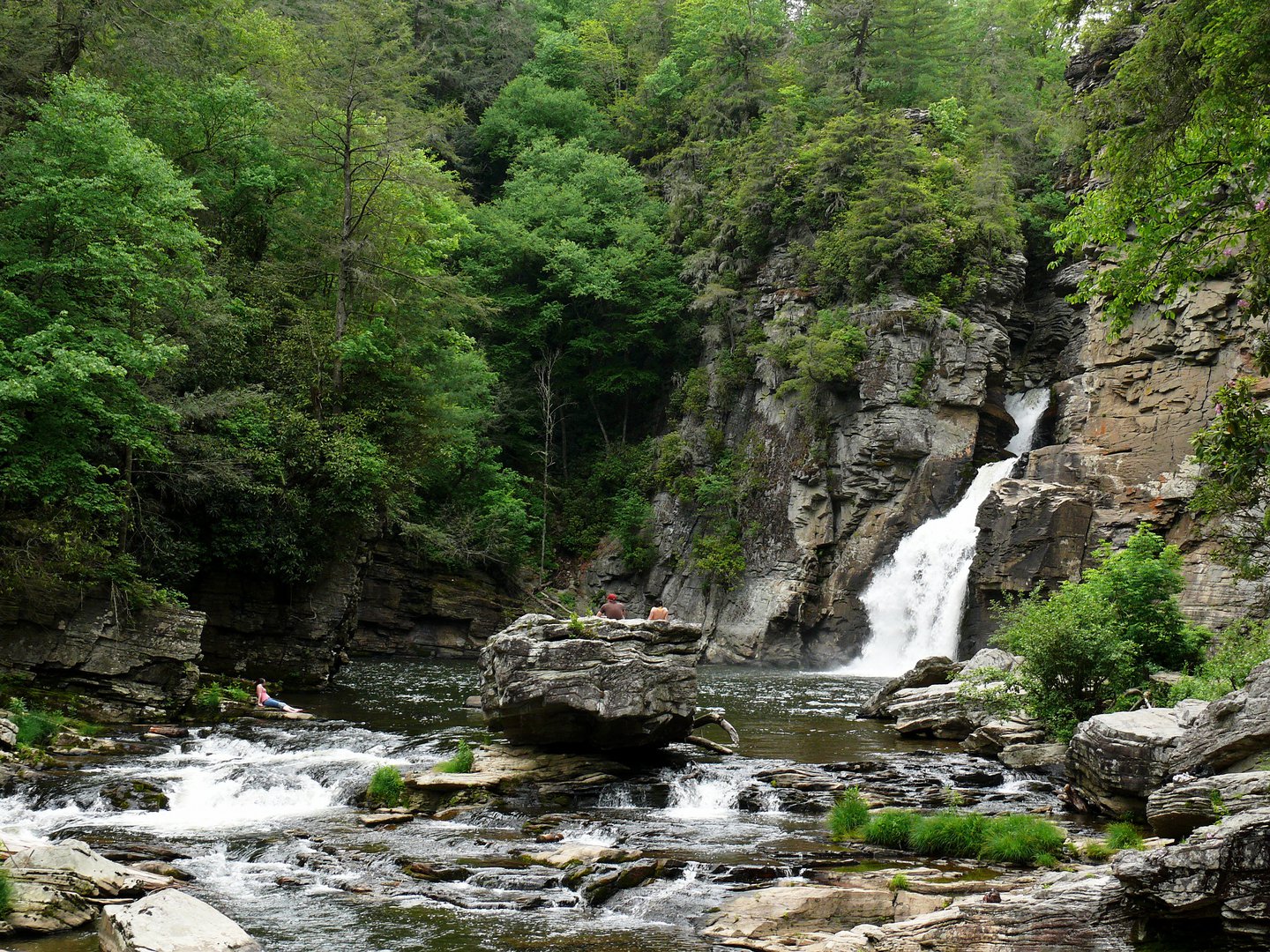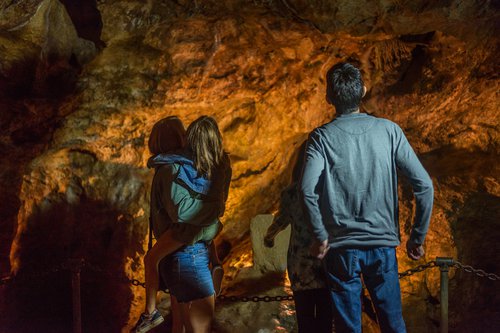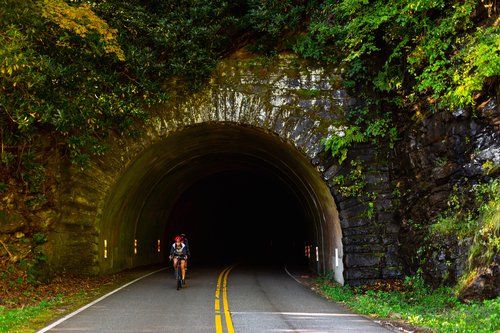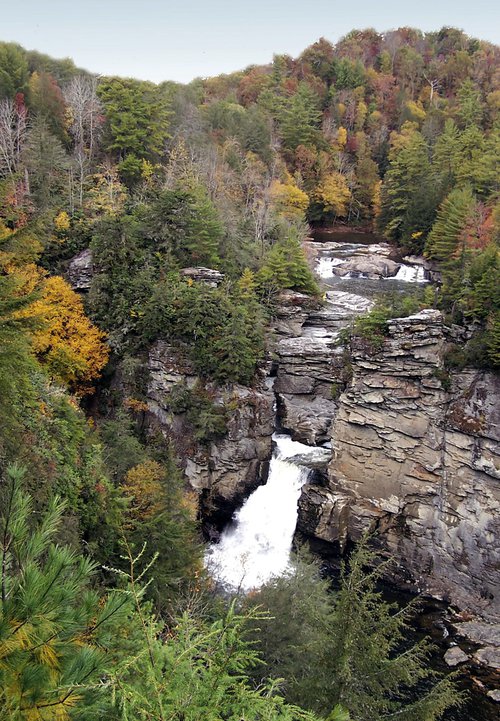
The community of Linville Falls is uniquely situated at the junction of three North Carolina counties and is right in the epicenter of outdoor adventure in the Blue Ridge Mountains.
The series of waterfalls that gives Linville Falls its name is a favorite — and one of the most photographed — destinations along the Blue Ridge Parkway. The falls feature three breathtaking tiers as the Linville River spills over and plunges down into the Linville Gorge. Bring a picnic to enjoy near the falls, or pitch your tent at the nearby Linville Falls Campground.
Linville Gorge, noted for being the nation's first officially designated wilderness area, was known to the Cherokee people as "the river of many cliffs.” This 12-mile “Grand Canyon of the East” provides many trails for experienced hikers, including Hawksbill Mountain and Table Rock.

Nearby, take a tour of Linville Caverns to learn about stalactites, stalagmites and other geological formations in these natural caves formed at the base of Humpback Mountain. Or hop onto the Blue Ridge Parkway to enjoy a scenic drive through the mountains and access to other nearby points of interest. Road cyclists, the Parkway is an idyllic way to spend the day. The section between Linville Falls and Crabtree Falls is an awesome ride!

Exploring Linville Falls

Linville Falls is one of the most photographed and popular waterfalls along the Blue Ridge Parkway. This amazing three-tiered waterfall is accessed from Milepost 316.3. There are a variety of ways to view the waterfall. Two main trails branch off from the Visitor Center, leading to five distinct viewing areas, each offering a different perspective on this stunning natural wonder.
Erwins View Trail, a moderate walk of 1.6 miles round trip, featuring four overlooks. The first overlook is one-half mile from the visitor center and is a moderate walk. From this point, the Linville River spills over the upper falls where it widens and pauses, spiraling out of sight before plunging 45 feet over the lower falls.
Chimney View, from the visitor center, walk .07 mile, where the lower falls can be seen. Be sure you have the camera open, this is an excellent spot for photos. The trail is strenuous in this area with considerable elevation gain.
At Gorge View Overlook, hikers can see the Linville River cutting its way through the Linville Gorge Wilderness Area. You may have heard Linville Gorge referred to as the "Grand Canyon of the South" and for good reason!
The Erwins View Trail ends at Erwins View Overlook, it's 0.8 mile from the visitor center. This panoramic view of the upper and lower falls is another amazing spot for pictures.
The trails to Linville Gorge (1.4 miles round trip) and to Plunge Basin (1-mile round trip) also start at the visitor center. From the visitor center, be certain to pick up maps before heading into the gorge.
The right fork takes hikers to Plunge Basin Overlook where they can view the lower falls and the Chimneys. The left fork winds down through rock cliffs to the bottom of the falls where the force of the water cascading over the falls creates a large pool. Both of these trails are strenuous. Swimming and climbing on the rocks are prohibited. When preparing for these hikes, please pack out everything you packed in.
Where to Stay Near Linville Falls
After a day of outdoor explorations, kick your shoes off and relax at one of these area accommodations.
Linville Falls Lodge and Cottages - The closest place to stay to the falls is this lovely stone and pine lodge. Furnished cottages, a manor house, and an on-site restaurant are available.
At the Top! - Voted the best view in the area, this rental home is located along Oconee Ridge and is close to the falls and the Blue Ridge Parkway.
Linville Gorge Wilderness Area - Sleep under the stars surrounded by stretches of virgin forest, rare and endangered species, and wildlife. Permits are required and available through the forest service.